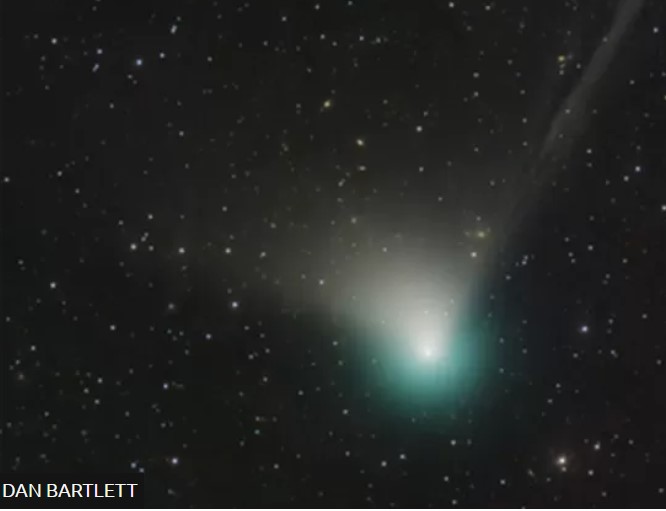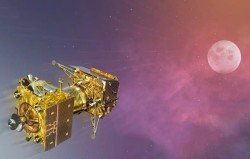Science & Technology

A once-in-a-lifetime show in the heavens is about to begin.
Astronomers and space fans in Nepal will be able to get a good look at it early Thursday morning.
The comet called C/2022 E3 (ZTF) will come closest to Earth between Wednesday night (February 1) and early Thursday morning - depending upon where you are. Astronomers in Nepal say it could be seen in the northern sky near the pole star long before dawn.
Astronomers are worried, though, that light pollution in and around Kathmandu might make it difficult for stargazers to capture a rare celestial sight.
Scientists keeping watch on it since its discovery in March 2022 have determined that its highly elongated orbit took nearly 50,000 years to travel from the Oort Cloud to Earth's orbit.
Astronomers believe the Oort Cloud is a spherical blanket of icy objects at the solar system's outermost edge. This is believed to be the source of comets that occasionally pass the Sun and Earth.
Saroj Raj Shahi, the BP Koirala National Observatory manager, said: “Observing this green smudge from the bright sky like Kathmandu is almost impossible.”
“We may have a chance to observe this once-in-a-lifetime object from other locations, outside of Kathmandu, with a dark sky, but it is really hard to observe from Kathmandu and even Nagarkot.”
Many of us might think that a comet is made of rocks, but it is actually made of ice. When it gets close to the Sun, it evaporates vapour and dusts, called the comet's tail. And, unlike meteorites, which glow and burn as they enter the Earth's atmosphere, it's hard to see the comet with the naked eye because it's so dim.
Shahi said: "We will try to watch it tonight and hope we can see it today, when it will be the brightest."
When and where to look?
This question can only help people who live in the dark.
Shahi said, "The fact that we've been watching for over a week and still haven't seen it makes me think that today is our chance, and the best time may be very early in the morning."
As the moon sets early and the sky becomes dark, one can go out in the open holding a binocular.
“We can see the exact location much more accurately in various sky map apps available on the phone,” Shahi said.
The comet can be seen from Kathmandu with a pair of binoculars, according to theskylive.com, a website that tracks astronomical events. It says that the location is circumpolar, which means that it will not go below the horizon and can be seen all night.
At this time, the comet can be seen 32 degrees above the horizon in the north to north-east sector of the sky, at a sky-coordinate of 6 hours, 38 minutes, and 72 degrees right ascension and 72 degrees declination.






